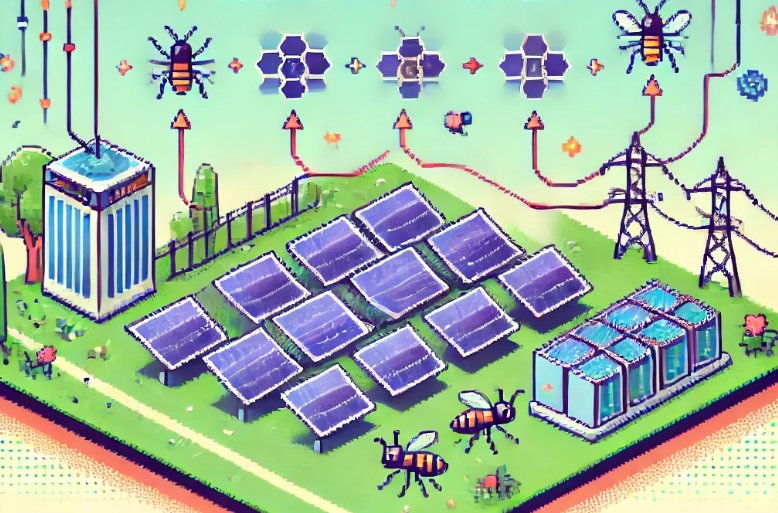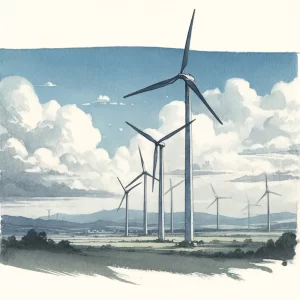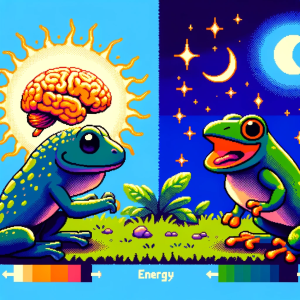
Optimizing Solar Energy Storage with Swarm Intelligence
Harnessing solar energy efficiently is crucial for our sustainable future. With the rise of photovoltaic (PV) energy systems, storing and managing this energy effectively becomes vital. Enter the world of swarm intelligence—a fascinating field that could revolutionize how we optimize solar energy storage systems. This blog looks at a study on how these algorithms work and their significance in our daily lives.
What is Swarm Intelligence?
Swarm intelligence is inspired by the collective behavior of social animals like ants, birds, and bees. These creatures perform complex tasks through simple, local interactions among individuals. Similarly, swarm intelligence algorithms use a group of simple agents (like virtual ants or particles) to solve optimization problems by interacting with each other.
How Does Swarm Intelligence Apply to Solar Energy?
Photovoltaic energy storage systems (PV-ESS) are essential for capturing solar power and making it available when the sun isn’t shining. These systems need to balance the amount of energy generated and stored, manage the distribution of energy, and ensure the stability of the grid. Swarm intelligence algorithms, such as Particle Swarm Optimization (PSO) and Ant Colony Optimization (ACO), help in optimizing these complex tasks.
Power Scheduling with Swarm Intelligence
Imagine you have a battery that stores energy from your solar panels. You want to use this energy when the sun isn’t out, like during the night or on cloudy days. Swarm intelligence helps in deciding when to store energy and when to release it, maximizing efficiency and minimizing costs.
Particle Swarm Optimization (PSO)
PSO mimics the behavior of birds flocking together. Each particle in the swarm represents a potential solution. They “fly” through the problem space, adjusting their positions based on their own experience and that of their neighbors. For PV-ESS, PSO can optimize when to charge and discharge the battery, considering factors like energy prices and weather forecasts.
Ant Colony Optimization (ACO)
ACO, inspired by ants searching for food, is excellent for finding the shortest path in a complex problem space. Ants deposit pheromones on their paths, guiding other ants to follow. In PV-ESS, ACO can optimize energy flow between solar panels, batteries, and the grid, ensuring the most efficient use of stored energy.
Real-Life Applications and Benefits
Smoothing Energy Demand
Think of the energy grid like a busy highway. During peak times, it’s crowded and can’t handle the load efficiently. Swarm intelligence algorithms can help smooth out this “traffic” by managing when energy is stored and used, reducing strain on the grid during peak times.
Cost Savings
By optimizing energy usage, these algorithms can help save money. For example, storing energy when it’s cheap and using it when prices are high can significantly cut costs for consumers.
Enhancing Grid Stability
Swarm intelligence can also improve the stability of the grid by ensuring a consistent energy supply. This is particularly important as renewable energy sources like solar can be unpredictable.
Future Challenges and Developments
Data Quality
The effectiveness of these algorithms relies heavily on the quality of the data they use. Accurate weather forecasts, energy prices, and consumption patterns are crucial for optimal performance.
Computational Complexity
Swarm intelligence algorithms can be computationally intensive, requiring powerful processors to run efficiently. Balancing performance and computational cost is an ongoing challenge.
Discussion Questions
- How do you think swarm intelligence could be applied to other renewable energy sources like wind or hydro?
- What are some potential drawbacks of relying heavily on algorithms to manage our energy systems?
Conclusion
Swarm intelligence offers a promising solution to optimizing photovoltaic energy storage systems, making renewable energy more reliable and efficient. As we continue to develop and refine these algorithms, they will play an increasingly important role in our transition to a sustainable energy future.
Be Part of the Change – Get Weekly Updates!
Stay updated with the latest discoveries in science! Our weekly newsletter is perfect for teachers and science enthusiasts. Get the newest research, major breakthroughs, and fascinating stories delivered to your inbox for free. Enhance your teaching and learning. Subscribe today! If you liked this blog, please share it! Your referrals help This Week in Science reach new readers.



